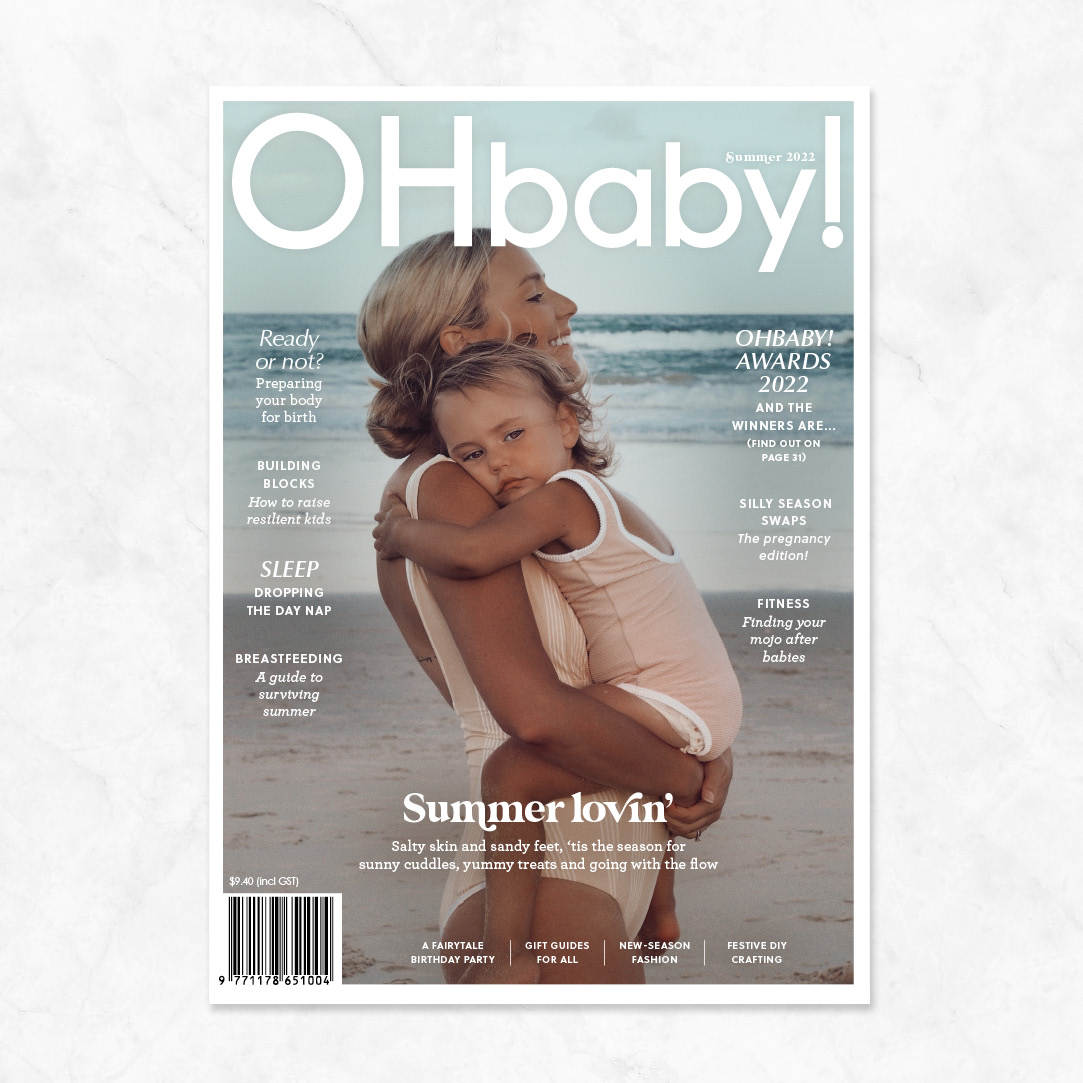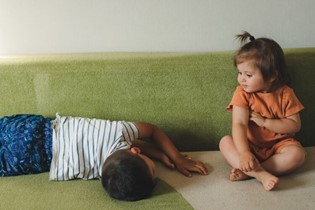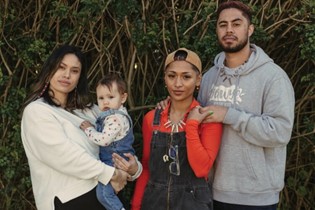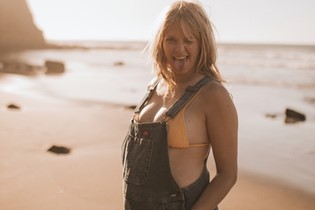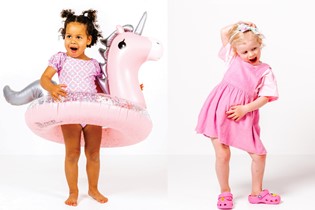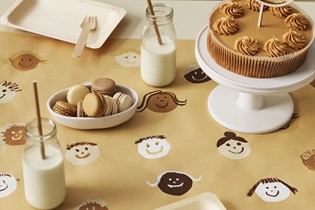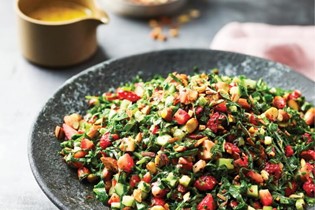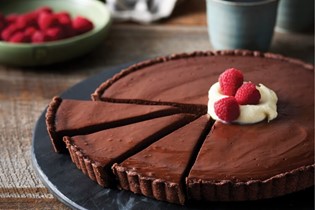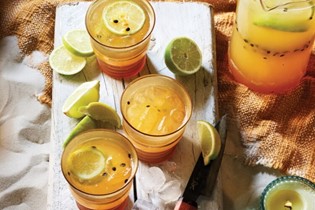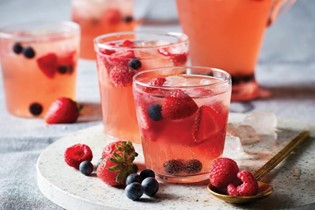Starting solids involves so much more than tasting
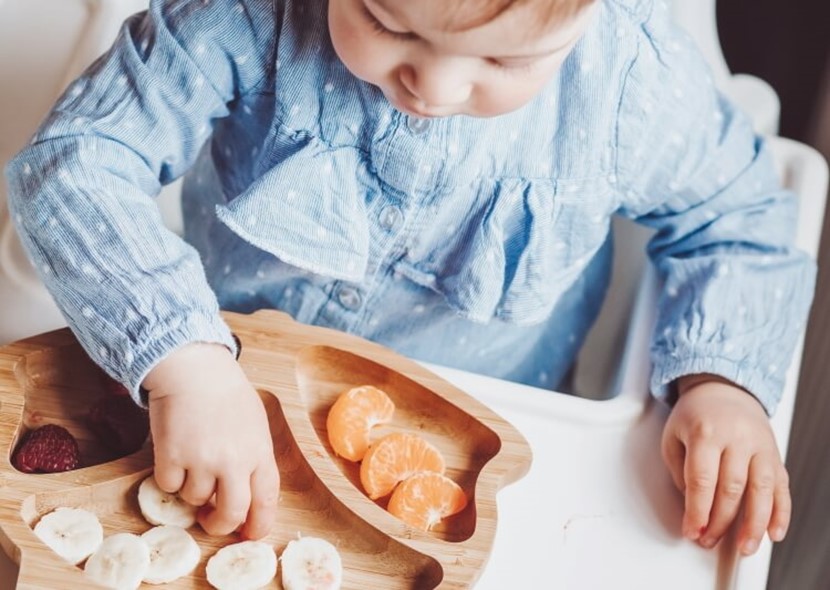
Giving your baby solid food for the first time is about so much more than just filling their tummy. Jenny Douglas from Jumpstart Nutrition shares how to make the best out of the introduction.
Eating food is an experience that involves all the body’s senses. We eat with our eyes, ears, nose, and mouth, and they all play a part in the pleasure of eating. Most babies start their food journey with breast milk and they use their sense of touch (ie rooting reflex) and smell to find the milk from the breast. As your baby grows older, they will start the next part of their feeding journey, which is eating solids.
If you think about the last meal that you ate out at a fancy restaurant you might recall how you didn’t just rush to eat the food. It may have had a pretty presentation on the plate, it might have come on a sizzling platter with a salivating aroma, or it might have included different textures such as crunchy and smooth throughout the dish. Now we don’t get to eat out very often as a parent, but when your baby starts on solids we can support the discovery of food in a relaxed way to allow them to explore the food through their different senses. In adult terms, we call this ‘mindful eating’ – using a moment to take in all that the food offers. When your baby is eating, there are several steps they take when exploring the food:
+ Seeing the food
+ Touching the food
+ Smelling the food
+ Tasting the food
+ Chewing the food
+ Swallowing the food
Taking time at each step and not rushing helps your baby learn to feel confident to move to the next step. Some babies love food and are happy to accept all foods without much thought, but there are plenty of babies who need some time before they are willing to eat all foods. A good way to explain this is imagining a playground – there are some kids who will literally throw themselves down a slide, and others who need to take their time. Some children need to watch others on the playground equipment first and then they may tentatively walk up the steps to the top and continue to watch as children head down the slide. Then they might ask for support to help them down a few times before they are willing to make their way down by themselves. This is also true for eating; some children need a bit more time in a positive and relaxed environment before they may be willing to eat. So, let’s talk about how to support your baby at each step of eating to guide them to take the step to eating new food.
SEEING
Seeing food and being comfortable around food is the first step to eating. Your baby has already watched you eat several times before they are ready for solids at around six months of age. Eating with your baby and having family meals when they first start on solids (as well as continuing to eat alongside your baby until they are teenagers and beyond) can be very helpful in exposing your child to a wide range of foods. Your baby might not be ready to eat salads just yet, but by having salads on the table (or any of your favourite foods) it's showing your baby that salads might be part of their diet in the future. Another example of this that you may have already noticed is that your baby wants to eat the food from your plate rather than their own. By watching you eat they are suddenly very interested in the foods you are eating and this builds confidence within your baby to ask to try it. This is why family meal times can be extremely helpful in progressing your baby to a diverse range of foods in the future.
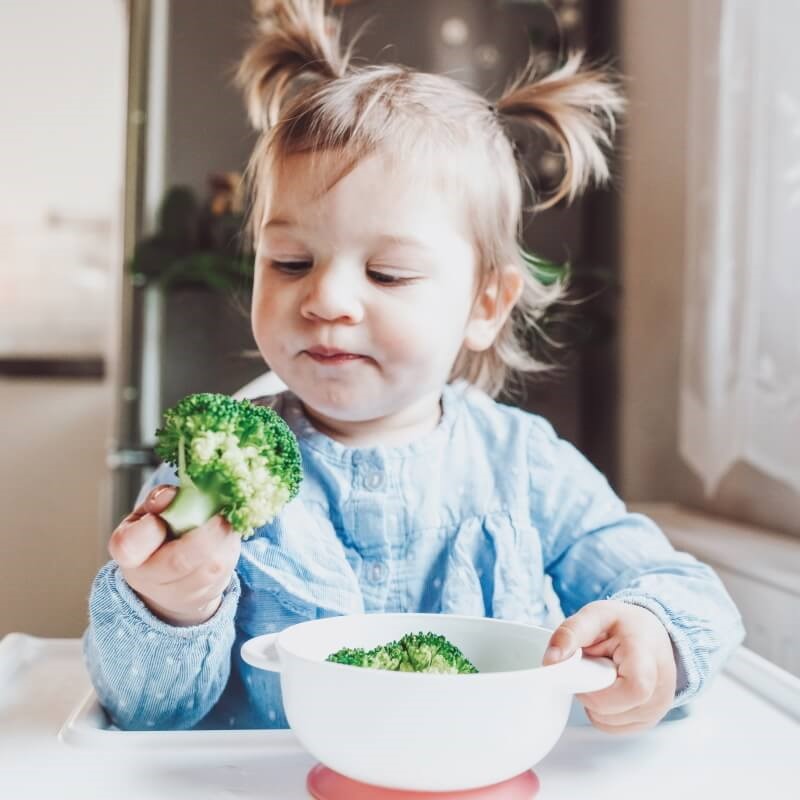
With the summer season comes the great variety of seasonal fruits and vegetables. Fruit and vegetables are often brightly coloured and this can be an exciting part of food exploring. When pureeing food for baby it's a good idea to try some blended foods as separate colours to help with excitement around the food. For example, blend broccoli and spinach together to make a green puree, or pumpkin and kūmara together to make an orange puree. Put blobs of coloured puree on your baby’s highchair tray and allow them to look at the colour and touch it.
As your child grows older you might start to talk about how different colours of foods offer different nutrients. You might talk to your child about how red coloured vegetables contain lycopene that helps with skin and heart health, or that orange foods contain beta-carotene that helps with eye health and helps us see well. You might not know these facts yourself, but you can learn more about food alongside your child and increase their knowledge (and your own) over time. Your local library often has a large section looking at why we eat and what food does to our body – these can be great areas to explore when you child is older.
TOUCHING THE FOOD
Messy babies are a common part of starting on solids and this is a fun part of the food exploration. Being able to touch the texture of the food and investigate it allows your baby to help identify the food and have their first guess of what the food may feel like inside their mouth once they eat it. Allowing your child to self-feed (baby-led weaning) from an early age allows them to actively explore food at their pace. It also helps them work out how to hold a slippery food such as avocado, or how to use their pincher grip to pick up small pieces of meat/vegetables.

As your child reaches toddlerhood it’s a good time to bring ‘messy play’ into their lives to help with ongoing confidence in eating. If a child is given the opportunity to interact with food through sensory play outside of the eating environment, they may feel more confidence with eating it. For example, coloured pasta/rice, pouring lentils out of a play teapot into a cup, finding toys stuck in jelly, or pushing trucks around a 'dirt' that is made with mashed potato.
SMELLING
The aroma of food is one that stimulates saliva in your mouth and can increase hunger and interest. We all have favourite cooking/baking smells that trigger memories of special occasions or foods that we enjoy. Teaching your baby to smell the food by showing them how you smell through the nose will help start this process of learning about aroma in food. Cooking smells from the kitchen can be great for baby to smell from a highchair in the kitchen with you. You can also let your baby or child smell stronger smells such as garlic, to see what they think of it.
TASTING
If your baby has already started on solids, you will have seen some amusing facial expressions as they try new foods. Remember your baby is born with an inbuilt taste for sweetness as breast milk is naturally sweet, so part of starting solids is learning that there are other flavours such as savoury, bitter, sour and spicy that comes with food. A funny expression or spitting out the food doesn’t mean they’ll never like it, it just means they’re not sure about it today.
KEEP OFFERING!
When your baby is older and moving into toddlerhood you may be able to help your child be more adventurous with food by asking them how they would like to taste the food. Would they like to take a small bite (like a bird), medium bite (like a cat), or a large bite (like a lion)?
Being able to taste food in a relaxed way can help take some of the pressure off eating. For example, your older child might be able to lick the spoon after making some baking, or they can try a small sample of food from a farmers or food market. These relaxed interactions of food are a great way to build confidence in trying foods in the future.
CHEWING AND MOVING THE FOOD AROUND THE MOUTH
When your baby starts on solids, they don’t immediately have the skills to know what to do with the food in their mouth. They learn how to bite and chew foods from watching you when you’re eating, and from practise. A baby initially will move their tongue forward and back, around six months of age they have improved mouth skills to move the tongue side to side and to bite down and chew on foods. Feeling the food inside the mouth and figuring out what to do with it is part of the starting solids journey.
Once your baby starts on solids and particularly once they start on finger foods they may start to gag on food. This is a normal part of starting on solids as they learn what to do with food in their mouth and how to move it towards the front of the mouth and chew the food more thoroughly before swallowing it. Gagging can look worrying as a parent, but you can help them learn what to do with the food in their mouth by showing them clearly that they need to chew the food and move it around the mouth before swallowing.
So, when you next sit down with you baby at the meal table, have a think how you can help them explore each sense at that mealtime session. Allowing your baby to experience the food through touch, smell and taste can be just as important as eating it, especially when introducing new foods. Think of starting solids as a long game, not a short game – the end goal is to foster a lifelong healthy and comfortable relationship with food.
Jennifer Douglas is a registered dietitian with over 15 years of experience working with families and is an expert on baby and child nutrition. Jenny has an online clinic to help guide you through managing food allergies/ intolerances, reflux, gut problems, growth issues, fussy eating and mealtime battles with simple and practical advice so that your family can eat well. For more information head to jumpstartnutrition.co.nz or Facebook: Facebook.com/JenniferDouglasDietitian and @jumpstart_kids_nutrition_nz on Instagram.

AS FEATURED IN ISSUE 60 OF OHbaby! MAGAZINE. CHECK OUT OTHER ARTICLES IN THIS ISSUE BELOW
